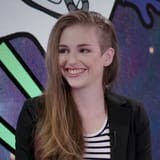The FTX trial, day eight: Defrauding lenders
BlockFi CEO testifies that the company wouldn't have loaned to Alameda Research if they had any idea what was really going on


It was a short day in court on Friday, and not a terribly exciting one. The day was spent questioning and cross-examining Zac Prince, the CEO of BlockFi, who was briefly introduced on Thursday. BlockFi had loaned money to Alameda Research, but was also a customer on FTX. Prince mostly testified about the former, helping the government make their case that Bankman-Fried is guilty of the charges of wire fraud and conspiracy to commit wire fraud on Alameda Research lenders.
BlockFi was a crypto lending firm that — before everything went pear-shaped — offered lending services both to individual retail customers and to institutional borrowers like Alameda Research. Individuals could borrow cash against their crypto holdings, or earn interest on them by lending them to BlockFi, who in turn lent those funds to their own borrowers.
BlockFi had a very bumpy 2022. In May 2022, crypto hedge fund Three Arrows Capital imploded and defaulted on some loans they'd taken from BlockFi. In June, two other lenders called Voyager and Celsius blew up, sparking a panic in crypto lending in general. BlockFi experienced record high withdrawal rates as customers decided to take their crypto back into their own hands, lest they end up waiting in line to receive some fraction of their assets as had the customers of Voyager and Celsius. By late June, BlockFi needed capital, so they entered into an agreement with FTX's US entity in which FTX extended $400 million in credit to BlockFi, with an agreement that FTX could acquire BlockFi starting as soon as July 2023. Prince believed that as soon as that date was reached, FTX would complete the acquisition.
Needless to say, that never happened.
When FTX collapsed, BlockFi found themselves over $1 billion in the hole. $650 million in loans were still outstanding to Alameda Research, who couldn't repay them, and the company had an additional $350 million of customer funds or loan collateral stuck on the exchange. BlockFi filed for bankruptcy within weeks of FTX.
Prince testified to all of this on Friday, and outlined the details of how BlockFi evaluated whether to lend to a given institution. The company would review the financial records of a prospective borrower and evaluate the likelihood the company could repay the loans it was requesting. Alameda Research never provided BlockFi with audited financial statements, testified Prince, but that was the norm for BlockFi's crypto customers — "because of issues with getting audits as a cryptocurrency firm", he reasoned.
"We always relied on the information that we were given by counterparties as being truthful and accurate," said Prince. That was ultimately their downfall. The statements provided by Alameda didn't disclose the true extent of the firm's liabilities, nor the existence of substantial loans from Alameda to FTX and company executives. All of those things would have led to concerns on BlockFi's end, said Prince, depending on the amounts and the details of the transactions involved. Prince testified that if the true extent of liabilities and the outstanding loans had been disclosed, "we probably wouldn't have lent to them at all" due to concerns that the firm might be insolvent.
Regarding the loans to executives, it "would have given us a lot of pause at a much smaller dollar number because it's just a really hard thing to explain a good reason for that to happen." Similarly, said Prince, if they had known that Alameda was trading with FTX customer funds, "I think we wouldn't have worked with them because that's not something that's appropriate."
When things started to go bad at FTX, Bankman-Fried and Ellison tried to convince BlockFi not to recall their loans. Ultimately, Alameda put up more collateral to shore up those loans, in the form of pledged shares in Robinhooda and Grayscale Bitcoin Trust. Unfortunately for BlockFi, the ownership of this collateral was foggy, and there's been dispute ever since over whether they belong to the FTX estate, Sam Bankman-Fried personally, or the BlockFi estate.
At one point, the defense team seemed to hope they could get Prince to implicate Caroline Ellison — and Ellison alone — in negotiating that deal: "[Posting additional collateral] was being done by Caroline Ellison as CEO of Alameda at the time?" asked defense attorney Mark Cohen. "My understanding was that it was, you know, Caroline who signed the doc but at Sam's instruction, so I was messaging and emailing with Sam at the time." The defense quickly moved on. The defense's position that Ellison was solely in control of Alameda, with Bankman-Fried having no insight or control over what happens there, seems to be crumbling by the day.
In addition to being one of Alameda Research's lenders, BlockFi was an FTX customer. They routinely stored the collateral they had received for loans on FTX, and they also stored customer funds on FTX. Prince testified that he believed FTX would never lend out these funds.
Behind the scenes
As observers question what, if any, strategy the defense team is trying to take, some motion activity behind the scenes has revealed one possible line of attack. A document filed on October 12 seeks permission to pursue the argument that the government's "misappropriation theory" of fraud on FTX customers is flawed. Although several customers have testified that they didn't agree to their assets being moved off the exchange and used by Alameda Research for trading, the defense seems to be pursuing the argument that the specific terms and conditions may have technically allowed FTX to do so.
Besides that, Bankman-Fried is still having trouble getting the Adderall he is prescribed for his ADHD, say his lawyers. He's supposed to get four doses a day, and they last around three hours. This means that the dose he receives at 4 am, when he's awoken to go to court to meet with his legal team, has largely worn off by the time they meet around 7, and he doesn't get another dose until he's returned to jail — which is sometimes as late as 9 pm. The Bureau of Prisons apparently won't allow his midday doses — which they consider a narcotic substance — to be transported by Marshals and provided to Bankman-Fried, so he's been going without. The defense and prosecution have both apparently been trying to get the BOP to address the issue, which they hope will be solved by Monday by putting Bankman-Fried on an extended-release dose of the medication (which he has consented to). Both legal teams seem to be working hard to resolve this, which Bankman-Fried's lawyers acknowledged. The prosecution is likely concerned that a medication issue affecting his focus could raise appellate issues.
Going forward
If timing allows, next week will likely bring the the testimony of the following witnesses:
Elan Dekel will testify as a customer of FTX. He is also the vice president of an AI company called Pinecone.
Richard Busick is a special agent with the FBI. He's a cell site analyst, meaning he analyzes records from mobile phone networks to establish a device's geographical location. The prosecution will be bringing him to establish that Bankman-Fried was in New York at various points in time, helping them establish venue for the case.
Nishad Singh was FTX's director of engineering. He has pleaded guilty to six charges, including the same types of fraud and money laundering charges facing his co-conspirators, but also a campaign finance charge pertaining to straw donations allegedly made on Bankman-Fried's behalf. Singh personally wrote some of the code we saw in evidence last week during Gary Wang's testimony.
Ramnik Arora was FTX's head of product, although his title didn't really match his job description. He mostly led up FTX's venture investing, and was involved with the BlockFi bailout deal in mid-2022. He was also a member of the "small group chat" that has popped up a few times in government exhibits, the Signal war room in which insiders tried to stop the FTX implosion. He has not been charged with any crimes.
Delaney Ornelas has been identified by the prosecution as an Alameda Research employee who was "involved in banking". However, the makeshift org chart published by Michael Lewis, which was apparently pieced together by on-site therapist and "performance coach" George Lerner, listed her as in charge of human resources at FTX US.1
Tareq Morad was a customer of FTX.
The prosecution estimated that "the vast majority" of their case should wrap up next week, though it might spill one day into the next. The trial schedule is about to get a little weird here: court is in session Monday through Thursday next week (October 16–19), but then won't meet again until Thursday and Friday of the subsequent week (October 26 and 27). This means that the defense case may begin as soon as the afternoon of Thursday, October 26.
Social image derived from CoinDesk image.
Footnotes
Robinhood is a trading app on which customers can trade traditional stocks, as well as cryptocurrencies. ↩
References
I am about as shocked to learn that there was anyone working in human resources at FTX as I was to discover that they apparently (at least briefly) had accountants. ↩




